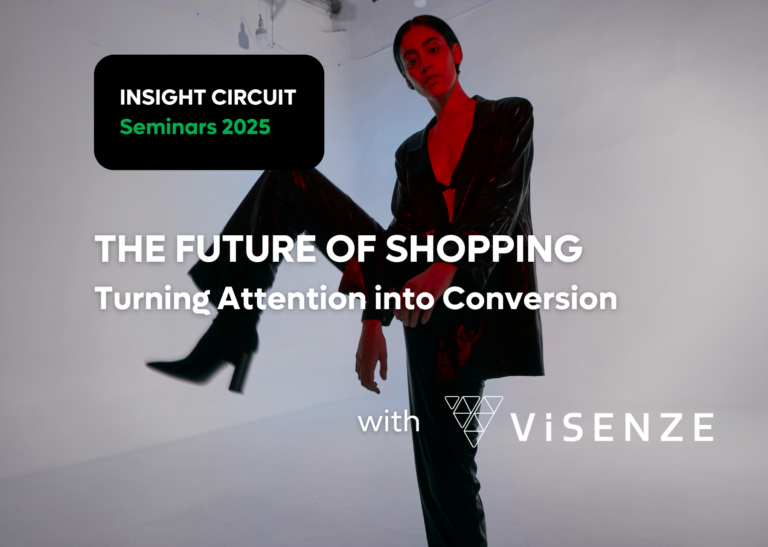
Speakers: Brendan O’Shaughnessy, Chief Commercial Officer, and Diogo Quintas, Head of Product & Engineering
Key Takeaways from the Singapore Fashion Council Webinar
In a recent session hosted by the Singapore Fashion Council, industry leaders Brendan O’Shaughnessy and Diogo Quintas from ViSenze—a pioneer in AI-powered retail solutions trusted by brands like Mango and ASOS—shared groundbreaking insights into how artificial intelligence is transforming retail from discovery to conversion.
From Grabbing Attention to Driving Sales
In today’s digital landscape, simply capturing a shopper’s attention is no longer enough. Consumers are bombarded with brand messages across multiple channels, making relevance and personalization critical for conversion.
AI is stepping in to bridge this gap. Tools like ChatGPT and multi-modal search platforms understand natural language, images, and behavioral patterns, enabling brands to deliver instant, hyper-personalized product recommendations.
Case in Point:
Adidas leveraged ViSenze’s Conversational Product Finder, allowing customers to express their needs in plain language, e.g., “I’m training for a half-marathon” — and receive intelligent, tailored shoe suggestions backed by clear explanations.
Automation Meets Optimization
AI isn’t just reshaping the front-end experience. It’s revolutionizing how ecommerce teams operate behind the scenes.
From updating keywords to curating collections and launching promotions, tasks that once required hours of manual effort can now be automated by intelligent agents. These agents continuously test, optimize, and iterate in real time, freeing teams to focus on other strategic priorities.
Looking ahead, the rise of the “agent economy”—a dynamic network of autonomous AI systems that collaborate behind the scenes—promises to revolutionize retail operations. These agents will handle everything from pricing strategy to customer support, enabling smarter and faster decision-making across the value chain.
Accessible AI for All
For small and medium-sized enterprises (SMEs), beginning their AI journey does not have to be resource-intensive. Tools like Replit (for coding assistance), Klinger (for generating product images), and Bolt (for building AI applications) offer cost-effective ways to explore AI’s potential. Starting with small projects, such as enhancing product descriptions or implementing chatbots, can lead to significant improvements.
To compete in an AI-first retail environment, brands must:
As Brendan and Diogo emphasized, AI is no longer optional—it’s foundational. Retailers who embrace AI-driven personalization and automation today will be tomorrow’s market leaders. The time to start is now.
If this kind of insight matters to you, don’t wait — register now for Insight Circuit: Seminars 2025. Our year-long series dives into the industry’s most urgent challenges. Spots are limited — secure yours today and stay ahead of the curve.